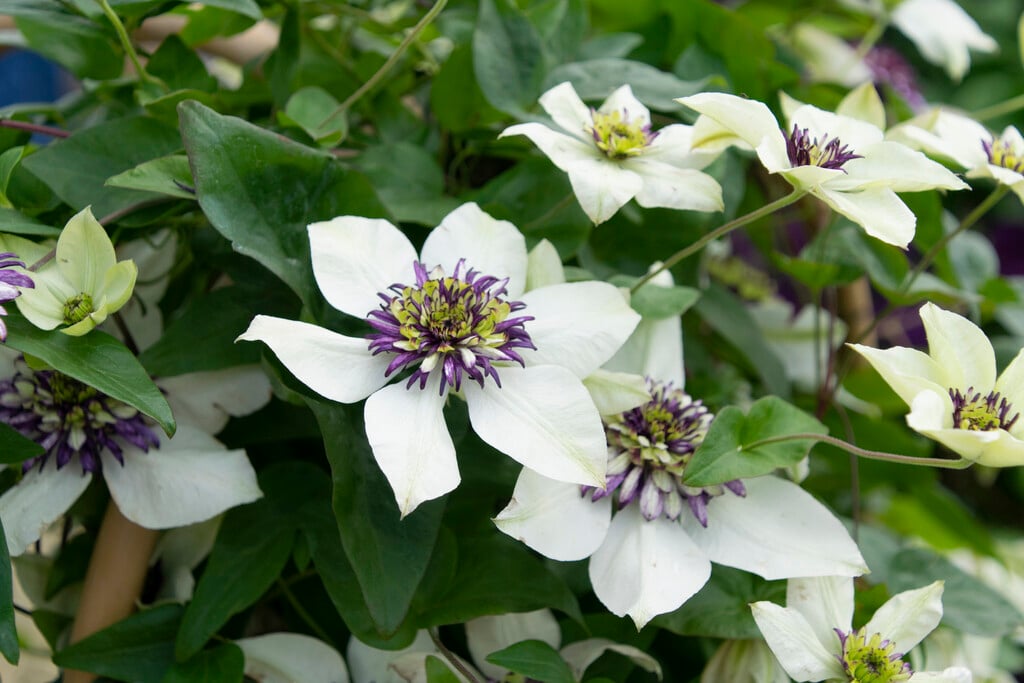Clematis florida var. florida 'Sieboldiana' (d)
clematis 'Sieboldiana'
A deciduous climber, 1.2-2.4m tall, with mid-green foliage. Creamy-white flowers, 7-10cm in diameter, with a large central violet-purple boss, are borne form mid-summer to early autumn
Other common names
passion flower clematisSynonyms
Clematis florida 'Sieboldii'Clematis florida 'Bicolor'
see moreClematis florida var. sieboldiana
Size
Ultimate height
1.5–2.5 metresTime to ultimate height
2–5 yearsUltimate spread
1–1.5 metresGrowing conditions
Moisture
Moist but well–drained, Well–drainedpH
Alkaline, NeutralColour & scent
| Stem | Flower | Foliage | Fruit | |
| Spring | Green | |||
|---|---|---|---|---|
| Summer | Cream Purple White | Green | ||
| Autumn | Cream Purple White | Green | ||
| Winter |
Position
- Full sun
Aspect
West–facing or South–facing
Exposure
Sheltered Hardiness
H3Botanical details
- Family
- Ranunculaceae
- Native to GB / Ireland
- No
- Foliage
- Deciduous
- Habit
- Climbing
- Potentially harmful
- Skin irritant. Wear gloves and other protective equipment when handling. Pets (rabbits): Harmful if eaten. For further information and contact numbers regarding pets, see the HTA guide to potentially harmful plants
- Genus
Clematis can be deciduous or evergreen shrubs or herbaceous perennials, mostly climbing by twining leaf-stalks, and often with showy flowers. Some have attractive fluffy seedheads in autumn
- Name status
Accepted
How to grow
Cultivation
Plant in a moisture-retentive, well-drained soil, in a warm, sheltered position. Plant with the crown 5-8cm deep to encourage new shoots to grow from below ground level. Can be grown in containers, at least 45cm deep and wide, in a peat-free, loam-based potting compost; best outdoors in mild localities only, ideal for conservatory cultivation. See also clematis cultivation for further advice
Propagation
Suggested planting locations and garden types
- Patio and container plants
- City and courtyard gardens
- Cottage and informal garden
- Wall side borders
Pruning
Pests
May be susceptible to aphid, slug and snail damage on young shoots
Diseases
May be susceptible to honey fungus (rarely), clematis wilt and clematis slime flux
Love gardening
Sign up to receive regular gardening tips, inspiration, offers and more
View our Privacy Policy
Get involved
The Royal Horticultural Society is the UK’s leading gardening charity. We aim to enrich everyone’s life through plants, and make the UK a greener and more beautiful place.
